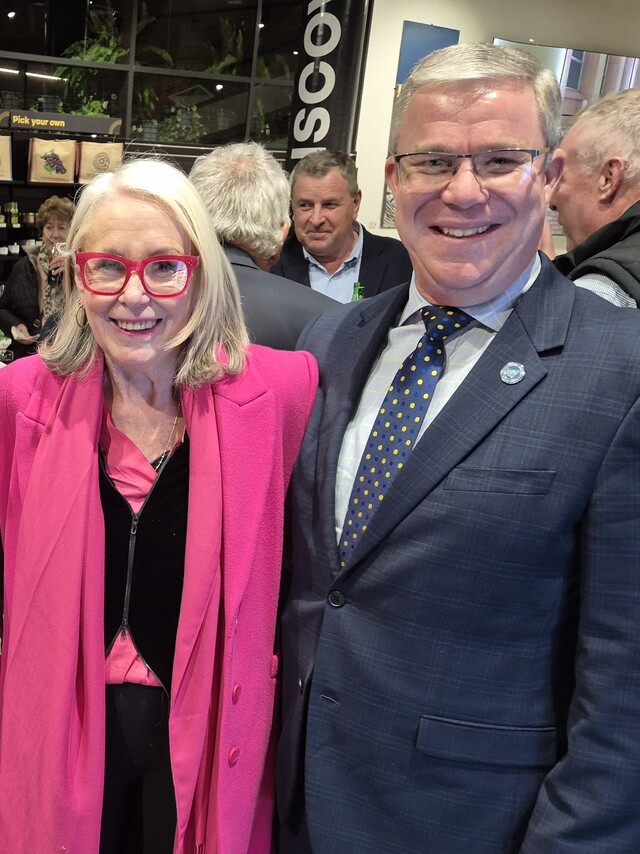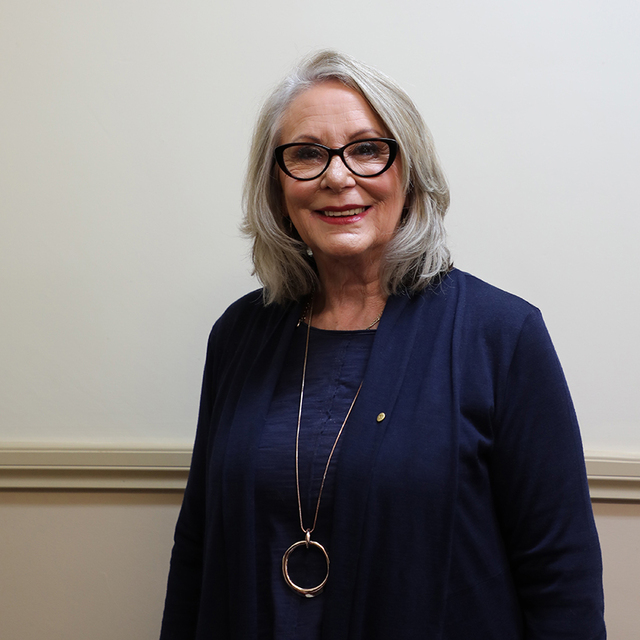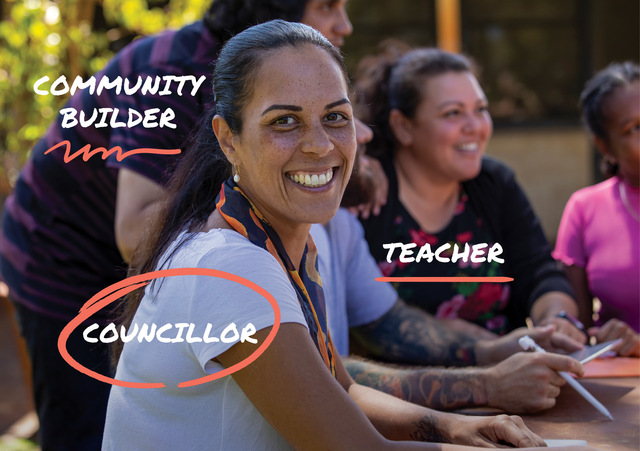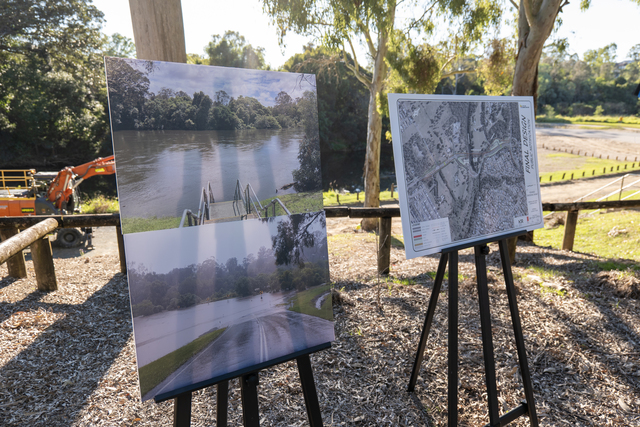A regular feature, this edition profiling Councillors from New South Wales
Mayor Jan Barham, Byron Bay Shire, NSW
Q. How long have you been on Council?
I was elected to Byron Shire Council in 1999 and was Deputy Mayor for eighteen months prior to the election in 2004 when I proudly became the first popularly elected Green Mayor in Australia.
Q. Can you tell us about your Shire?
Byron Shire is an area of 566 square kilometres, featuring the country’s most easterly point, Cape Byron and is only 180 kilometres south of Brisbane and 800 kilometres north of Sydney. It is environmentally significant, identified as one of the most biodiverse areas in Australia, features beautiful coastal landscapes as well lush hinterland where 30 per cent of the population reside. The Shire has a number of towns and villages, coastal and rural and a population of 29,083. The annual growth rate is two per cent. It has a rate base of 13,134.
The primary economic activity is tourism and it is estimated that about two million people visit our Shire each year. The Shire has a history in agriculture, with dairying and food production still important in the area.
The Shire has a rich Aboriginal culture. It also has an alternative culture that has flourished since the 1960s, mixing hippy, surfing and environmentalism and attracting many artists and free thinkers.
Byron Shire residents have been at the forefront of the application of green thinking to government and development. There is also the reputation of speaking out for protection of our significant natural environment and our local culture against proposals deemed inappropriate by the community. The strength of community commitment has been the dominant feature in defining our future. Residents have had the passion and the knowledge to question and require government to explore innovation and respect for the conservation and cultural values of the community.
Q. What are some of the challenges you’ve faced in Local Government?
The challenges of Local Government are many and varied but equally so are the rewards. Being part of a community that has been exploring values and principles that are at the forefront of State and Federal Government thinking has been a great challenge. The belief in the principles of sustainability has been motivating the community and its representatives since the 1980s, with some fantastic achievements.
I am proud to have been part of the community pressure that has promoted change in government’s role in serving the present and the future while respecting the past. Personally, some of the most challenging experiences have been when it has been necessary to represent issues that are not yet defined in legislation. I have experienced the personal attacks, some on the grounds of my beliefs and some, sadly, based on sexism and intimidation.
The other great challenge has been the frustration of the time frame for implementation of decisions or desires of the community. As someone with a background in business, it is often difficult to accept and explain to people the need for good process to ensure delivery of outcomes. I believe there is, however, a great challenge for Local Government to adapt and to define more responsive and efficient mechanisms. A review of the management practices of business and borrowing some of the principles of efficiency that drive the pursuit of profit but retain the principles of good governance may be productive.
There is a real challenge in delivering the increased responsibilities transferred to us by other spheres of government, which usually come to us without the corresponding funds.
Q. What are important issues to you?
My greatest interest in Local Government comes from its closeness to community and the issues that confront residents every day. It is the inter relationships of issues that appeals to me in the role of Local Government. The concept of sustainability is my priority and the implementation of it as a meaningful management exercise. Local Government has the unique responsibility to deal with the social, cultural, economic and environmental issues that affect local communities and provide the effective integration of all those aspects.
Q. What are some of the issues facing your Council area?
The Byron Shire in being at the forefront of conservation has been successful in protecting and preserving significant environmental areas. This commitment has defined the area as a special place that is appreciated by millions of visitors. It is ironic that this has created a new pressure that Council has a responsibility to manage. The pressure of tourism and development has seen us become a sea change icon. This aspect presents a great challenge, how to manage the positive economic potential and protect the social and environmental impacts. We have been successful with delivery of environmental management strategies.
I am proud that we have adopted a Biodiversity Conservation Strategy and a Sustainable Agriculture Strategy, implemented innovative sewerage with wetland systems and are in the process of delivering a Community Safety Plan and developing a Cultural Plan for the shire.
This community has also made a commitment to the local Indigenous community and continues to work closely with the State Government to deliver meaningful reconciliation. The priority is to manage the balance of needs delivery to a diverse and pressured natural and social environment, while protecting and enhancing the quality of life of residents.
Q. What are the key aspects of being a good Councillor?
Being an elected representative is an honour and a responsibility. It requires a commitment to being active in the community, being able to interact with all sectors and treating them all with respect. Listening and informing is an important aspect of the role. I have found it is a priority to be honest with people, even if it means you aren’t delivering what they individually may want. As a representative in your community, it is essential that fairness and equity is at the forefront of all interactions to enable trust to develop.
Mayor Fred Anderson, Camden Council, NSW
Q. How long have you been on Council?
I have been on Council since September 1999 and Mayor since 2003.
Q. Can you tell us about your Council?
Enhanced by the Nepean River with large green open space and bush corridors, the Camden Local Government Area (LGA) covers 201 square kilometres and is located approximately 60 kilometres south west of Sydney. Camden LGA has a population of 50,000, with almost 40 per cent under the age of 25 years. However, our population is expected to grow considerably with the State Government announcing new urban release areas which will bring an additional 55,000 new homes. Characterised by historic towns, country villages and with new and expanding suburban areas, Camden is rich in rural heritage and has still been able to retain its working country town atmosphere and culture.
Q. What are some of the challenges you’ve faced in Local Government?
Keeping in front of the oncoming challenges – planning for change and managing change rather than reacting to change. Coming to terms with the changes to the Local Government Act 1993. Respecting the division of responsibilities between the elected arm and the executive arm.
Q. What are important issue to you?
The provision of infrastructure both social and built – having the right people with the right expertise and experience to build public buildings to provide for the present and the longer term needs of the community and for the social needs. Developing policies to provide a good basis for a Local Government Area that in 25 years time will have a population in excess of 250,000 people with a growing proportion in the older age group as well as with many younger families.
Q. What are some of the issues facing your Council area?
Maintaining a balance between the urban and the rural. Providing land for industrial and commercial use and attracting industry to locate in those areas. Public transport being provided as housing estates are established, and encouraging residents to leave their car in the garage. Ensuring the State Government and Federal Governments upgrade their roads to cater for the additional traffic. Striving to retain the strong sense of community that already exists and see it perpetuated and inculcated in our newer towns. Incorporating environment strategies and technology in the planning of our new suburbs and housing.
Q. What are the key aspects of being a good Councillor?
A listening ear, an open mind, a good reader, a willingness to learn, being appreciative of fellow Councillors views and not making up ones mind until the matter is formally discussed in open Council. A stickler for protocol, an aversion to anything other than the truth, person of principle and not given to grandstanding. A person willing to mix with their community, to be seen as neutral, to be accepted as an independent – not Labor or Liberal or Green – but one that strives for the best for their community. Patient, loyal, not alienating your family and being a team member.







